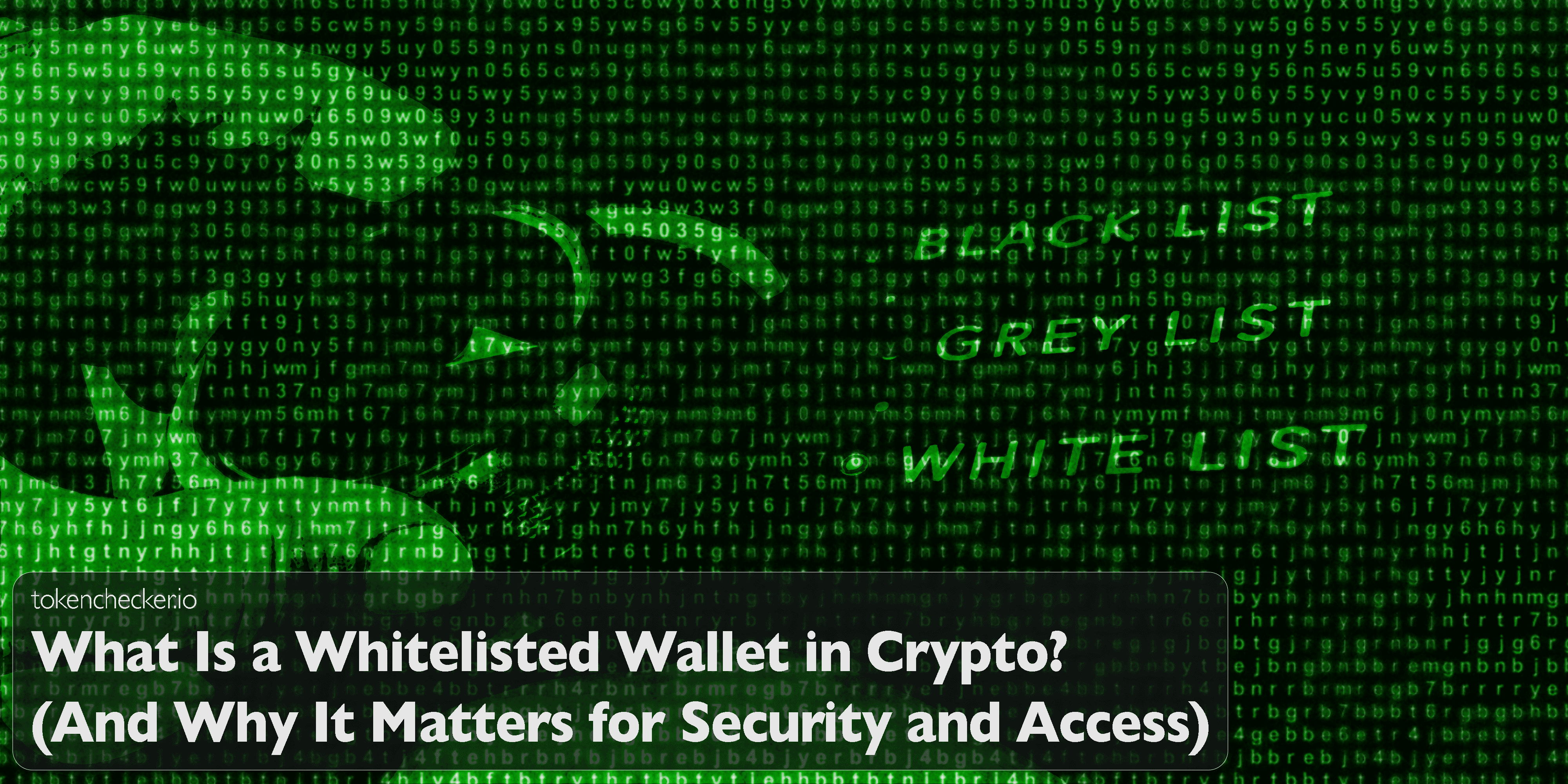
What Is a Whitelisted Wallet in Crypto? (And Why It Matters for Security and Access)
Not every wallet in crypto gets the green light. Some need to be explicitly approved before they can send funds, receive tokens, or even participate in a launch. That’s the concept behind a whitelisted wallet: a built-in gatekeeper that controls who can interact with a smart contract, platform, or crypto event.
Whether you're trying to withdraw from a centralized exchange or mint a new NFT, being on the whitelist can mean the difference between access and exclusion. But it’s not just about exclusivity. Whitelisting plays a central role in crypto security, regulation, and community management.
Let’s break it down.
What Is a Whitelisted Wallet?
A whitelisted wallet is simply a pre-approved address allowed to perform certain actions like participating in a token sale, withdrawing from an exchange, or minting NFTs. Any wallet not on the list is blocked by default.
It’s a classic security concept: default deny, allow by exception.
There are two main types:
- Participation whitelists: Used for things like ICOs, IDOs, NFT mints, and airdrops. Only selected wallets can join in.
- Withdrawal address whitelists: Used by exchanges to restrict where funds can be sent.
Being whitelisted means you’re verified, trusted, and allowed to act. Everyone else is automatically denied.
Why Whitelisting Exists
1. To Improve Security
Whitelisting protects against:
- Phishing attacks: Even if a hacker gets your login, they can’t withdraw funds unless the address is whitelisted.
- Human error: Sending funds to a wrong address is one of crypto’s most common mistakes. A whitelist prevents that.
- Bot abuse: In token sales or NFT mints, bots can buy everything. Whitelisting keeps them out, often used in conjunction with anti-bot mechanics.
2. To Meet Regulations
Whitelisted wallets are often linked to KYC and AML checks. In token sales, both buyer and seller may be required to have verified, compliant wallets. This makes whitelisting essential for:
- Security token offerings
- Geographic restrictions
- Accredited investor sales
It’s becoming a regulatory expectation—especially as institutional adoption grows.
3. To Build Community and Hype
Being whitelisted can feel like VIP access. Projects use it to:
- Reward loyal users or early backers
- Create scarcity and exclusivity
- Control demand and avoid gas wars during NFT mints
It’s part security, part strategy.
Where You’ll See Whitelisted Wallets
Centralized Exchanges (CEXs)
You add a withdrawal whitelist inside your exchange account. Once it’s enabled, you can only withdraw to the approved addresses.
This typically involves:
- 2FA confirmation
- Email/SMS verification
- A delay (e.g. 24-48 hours before the address is active)
It’s optional but extremely effective at preventing fund loss or theft.
Token Sales (ICOs, IDOs)
Projects often require users to register ahead of time:
- Submit documents (KYC/AML)
- Join a Discord or complete social tasks
- Get placed on a whitelist for early access
Only wallets on the list can buy when the sale goes live. Everyone else is blocked by the contract.
NFT Projects
This is sometimes called “allowlisting.” Common uses:
- Preventing gas wars during public mints
- Rewarding active Discord or Twitter community members
- Granting exclusive early mint access
How It Works Technically
Basic Smart Contracts
A simple mapping of wallet addresses:
mapping(address => bool) public whitelist;Only addresses marked as true can interact with the function (e.g., mint, claim, buy). This is a core part of smart contract security.
Merkle Trees (Scalable Whitelisting)
For larger lists, Merkle Trees allow thousands of addresses to be “proved” with just a short cryptographic hash. It keeps costs low while maintaining trustless verification.
Used in:
- Ethereum NFT mints
- High-demand launches with thousands of entries
Zero-Knowledge Proofs (Privacy-Preserving)
Tools like Semaphore use ZKPs to allow someone to prove they’re on a whitelist without revealing their identity. This merges compliance with privacy—important for future regulations.
Downsides and Limitations
- User Friction: Getting whitelisted can involve extra steps (docs, engagement, delays)
- Attack Surface: Fake “whitelist forms” are a common phishing tactic. Always verify official links.
- Platform Dependency: A whitelist on Exchange A doesn't protect your funds on Exchange B
- Illiquidity Risk: Especially in NFTs, if you mint something no one wants, you're stuck with it.
Still, when done right, whitelisting massively reduces unauthorized actions and adds structure to chaotic launches.
Real-World Examples
- Coinbase and Crypto.com: Offer whitelisted withdrawal options with lock-in delays and OTP confirmations
- Ethereum presale: Raised $18M with whitelisted addresses and compliance checks
- Moonbirds and BAYC: Used allowlisting for smoother NFT drops
- Polkastarter and Binance Launchpad: Require token holdings or KYC to qualify for IDO access
Whitelisting has evolved from a FOMO marketing tool in 2017 to a regulatory requirement in 2025.
Final Thoughts
In a permissionless world, whitelisting creates controlled spaces. Whether you're trying to mint an NFT, buy into a presale, or lock down exchange withdrawals, a whitelist adds protection, fairness, and trust.
It’s not perfect. But it’s one of the few tools in crypto that bridges both community building and compliance—while also stopping a ton of scams before they start.
Want to know if a token’s smart contract uses whitelisting features like mint-gatekeeping or selective transfer logic?
tokenchecker.io can flag these permission structures in its Contract Analysis tool before you ever buy.